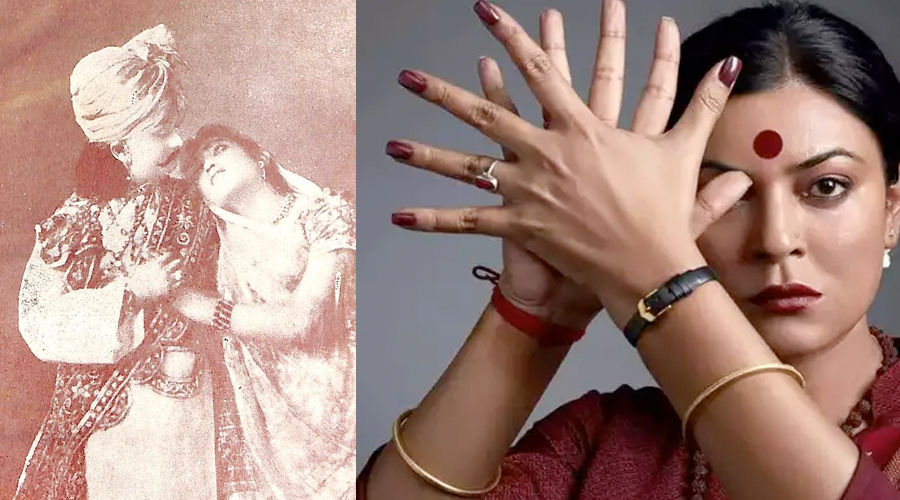
Theatrical Transvestism - From Jayshankar ‘Sundari’ to Sushmita Sen in ‘Taali’
Indian theatre has a long tradition of men impersonating women in theatre due to deeply rooted patriarchy. These portrayals were mostly seen in Parsi, Gujarati and Marathi theatre. Interestingly in Kerala, Kathakali has been an enduring bastion of male agency where the male artist with its stylized but expressive gestures took on masculine and feminine roles. This potent coalescing of energies in an actor’s body is a beautiful phenomenon to watch.
In Patanjali’s Mahabhasya (150 B.C.) the male actor playing female roles is described as a Bhrukumsa, one who ‘flutters his brows’. Even the ancient text Natyashastra gives importance to a cultural space that valorizes cross-gender role-play.
Why just India, Greek theatre had young men with unbroken voice playing women’s roles. Japan had a tradition of an onnogato, a male actor who only played female roles, lived their personal lives, dressing and behaving like women. Even Shakespeare’s play is noted to have a blushing male Juliet!
The torchbearer of Gujarati theatre Jayshankar Bhudardas Bhojak earned the title of Sundari after his performance as Desdemona in the Indian version of Shakespeare’s Othello, named Saubhagya Sundari. It is said that he played his female characters with so much grace and conviction that women thronged him wanting to learn how to drape the sari and how to carry the palav. In old city of Ahmedabad a performing arts theatre stands tall reverberating the songs of a bygone era, the Jayshankar Sundari hall.
Talking about the recent times, Bollywood star Sushmita Sen is being featured as transgender activist Gauri Sawant in her upcoming biopic ‘Taali’. This is not the same as a man impersonating a woman. However in Indian theatre typically a man portrays a transgender person. We do not know yet the reasons of casting Sen as the transgender activist but one can speculate that the nuances of his characterization needed a different treatment. Male actors invariably bring in stereotypical tics, which could have turned the character portrayal of Gauri Sawant into a caricature, where one is hopeful that Sen with her intelligence shall excel.
Women have come long way from not being able to set foot on the stage and being portrayed by a male counter part, to the rise of feminist theatre and women using the very medium as a tool of social change, further giving rise to a new audience that is receptive to authentic depiction of women, dismantling binaries, and creating equality as an alternative not only to the male gaze but also to the normative gaze.